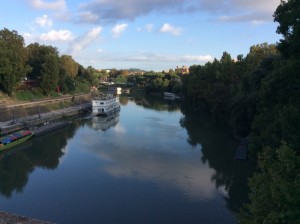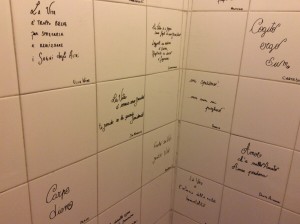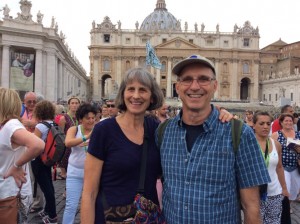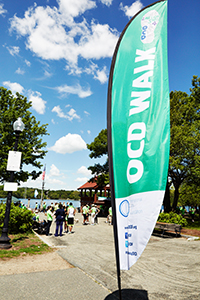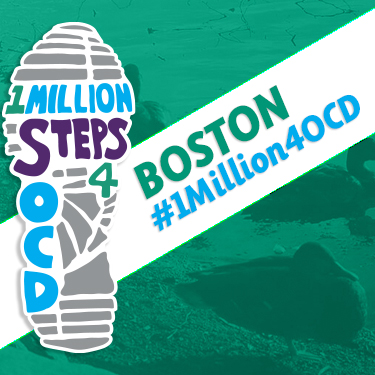A New Source of Hope for those Affected by BDD
“Your son Nathaniel might have BDD,” Dr. L.K. suggests to my wife Judy and me.
“What’s BBD?” we ask, mixing the letters up.
“BDD—Body Dysmorphic Disorder,” she repeats.
We had already journeyed as a family for six years with our son as he battled unexplained OCD-like symptoms, and now he was obsessed with imaginary markings on his face, concerns about his skin and hair, stuck in the bathroom mirror for hours each day. His sister Carrie was mystified by his compulsion to copy her. Other professionals had provided various labels for his condition, which began when he was 11 years old, but not this one. Rushing to the Internet, we did locate an invaluable book, The Broken Mirror by Katharine Phillips, but not much else. Thus began our family’s journey of awareness about BDD.
Jump forward. Last Friday, The IOCDF sent me the link to the new BDD website a group of us has been working on together prior to its launch. Looking at the site in its final form, my eyes welled up as I took in the avalanche of information about BDD: definitions, personal testimonies, access to support groups, lists of treatment providers by geographic area, articles about possible medications, and the latest neurological research into the disorder. In short, a one-stop, instantly available resource for professionals, sufferers, their families and friends. How Judy, Carrie, and I would have relished this website years ago, as would Nathaniel’s friends, Carl, Dan, Justin, Nate, and our extended families and friends. We would have referred everyone we knew to the site. And what benefit might Nathaniel have had from learning about others who were struggling with BDD? Would he have felt less alone?
Since Nathaniel’s death in 2011, I have walked 4,400 miles to make sense of the senseless—to bring forth some good from the undeserved suffering that Nathaniel endured for 13 years with this invisible, poorly understood, and virtually unknown disorder. My formal pilgrimages from Philadelphia to Boston and then from PA to Washington, DC were to raise awareness about BDD. I walked many more miles locally to ground my grief for the loss of a dear son. “Got to get the word out!” has been my mantra, whether on a formal walk or in training. “Got to tell Nathaniel’s story over and over again,” so that others can find help. And now they can.
The website is a dream fulfilled for many of us.
The BDD SIG (Body Dysmorphic Disorder Special Interest Group)—a group of doctors, researchers, therapists, sufferers, experts in the field, my family and I—has been planning the site for two years. We have met at annual conferences, authored pieces, inventoried other websites, and discussed what would work best for the IOCDF site. We share a passion to get the word out about BDD to those in search of it, and since the disorder strikes 1 to 2% of the population, the need is enormous. With up-to-date materials for professionals, families, and sufferers, the website gives BDD greater recognition and provides hope that understanding of the disorder and treatment options are progressing. Our work is not over, but we have taken a big leap forward.
The French have an expression appropriate for this occasion: “Chapeau!” best translated into English as “Hats off!” Chapeau to members of the BDD SIG for authoring articles and overseeing the content, to the IOCD Foundation, Jeff Syzmanski, and Carly Bourne, for pulling it all together, and to the web creators for designing the site.
The last chapeau goes to my son, Nathaniel, whose story will continue to touch people he never met, because now, when a counselor says, “Your child may have BDD,” families won’t have to look far for all the information they need.
Visit the new site, www.helpforBDD.org, here.
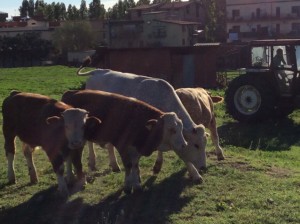 The ugliness of the Roman suburbs abruptly changes to a bucolic setting. Cows! What a relief to leave behind trash, traffic, and noise. A mid-morning cafelatte e cornetti further soothe our spirits.
The ugliness of the Roman suburbs abruptly changes to a bucolic setting. Cows! What a relief to leave behind trash, traffic, and noise. A mid-morning cafelatte e cornetti further soothe our spirits.
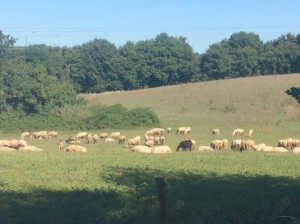 Editor’s note: Judy says her version of today’s walk would have been shorter. Long, hot, tiring: the pits. 9/21/15
Editor’s note: Judy says her version of today’s walk would have been shorter. Long, hot, tiring: the pits. 9/21/15
